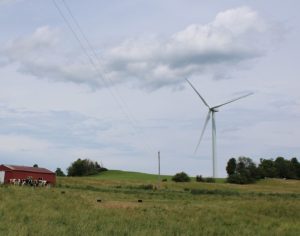VESTAL, N.Y. — Binghamton University will use a $500,000 federal grant for its New Energy NY project to develop its proposal to turn the Southern Tier region into an energy technology hub.
The university has been selected as one of the nation’s first awardees for phase 1 of the American Rescue Plan’s (ARPA) Build Back Better Regional Challenge, per a school news release.
U.S. Sen. Majority Leader Charles Schumer (D–N.Y.) announced that the federal government had awarded Binghamton University the funding.
(Sponsored)

Keeping Your Firm Secure on the Road to Digitization
By Dan Hernborg Sales Engineer With the looming threat of a potential recession and economic downturn, many professional service firms are looking to reduce costs and increase efficiency in preparation.

Five Bookkeeping Mistakes That Could Be Costing Your Business Thousands
Proper bookkeeping is the financial backbone of any successful business. Yet for many small business owners, it’s often overlooked until something goes wrong, or a report is suddenly needed. Unfortunately,
The grant also allows the university to compete in phase 2 of the challenge for up to $100 million to put “Broome County on the map as a hub for battery manufacturing with national and global impacts,” per the release.
The U.S. Department of Commerce’s Economic Development Administration (EDA) chose Binghamton for the project. It brings together Binghamton University, SUNY Broome, Rochester Institute of Technology, NY-BEST and others to develop a proposal for phase 2 of the competition.
NY-BEST is the Albany–based New York Battery and Energy Storage Technology Consortium. Established in 2010, it serves as an “expert resource for energy storage-related companies and organizations looking to grow their business in New York state, per the NY-BEST website.
The proposal will focus on expanding research, development, testing and workforce assets to meet the demand of the “emerging” battery-manufacturing industry in the Southern Tier and Upstate New York.
If fully funded, the project estimates that over a 10-year period as many as 8,000 new direct jobs would be created, with the potential to support or sustain thousands of additional indirect jobs.
“This is big news for Binghamton,” Schumer said. “The Southern Tier has long been a home to innovation, as the birthplace of IBM, flight simulation and virtual reality, and it continues to do groundbreaking research through world-renowned institutions like Binghamton University. Now, many more will see what I’ve long known: the Southern Tier has all the right ingredients to be the nation’s next battery manufacturing and research hub.”
“When Stan Whittingham and Per Stromhaug [assistant vice president of the Office of Entrepreneurship and Innovation Partnerships] discussed this proposal with me, it just made so much sense. With the appropriate support, we can become a national hub for battery innovation, manufacturing and workforce development,” Binghamton University President Harvey Stenger said.
- Stanley Whittingham is a Binghamton University distinguished professor, researcher and 2019 Nobel prize winner in chemistry.
“This New Energy New York project will capitalize on the research of our colleague Stan Whittingham, now known globally as a Nobel laureate and co-inventor of the lithium-ion battery,” Bahgat Sammakia, VP for research at Binghamton University, said. “We’re fortunate to have an experienced, well-respected innovator like Stan leading the way and pushing our region and our country to take bold action for a more environmentally friendly future.”
The Build Back Better Regional Challenge received 529 Phase 1 applications from across the U.S., Schumer said. The New Energy NY project was one of 60 proposals selected as a Phase 1 awardee.
Schumer emphasized that receiving this award and being a finalist for Phase 2 funding will “shine a national spotlight” on Binghamton and the Southern Tier as a “rapidly growing” battery-manufacturing hub, prime for investment and new jobs.
In phase 2, the EDA will award between 20 and 30 regional coalitions $25 million to $75 million, and up to $100 million, for selected projects to grow new regional industry clusters or scale existing ones through planning, infrastructure, innovation and entrepreneurship, workforce development, and access to capital.




